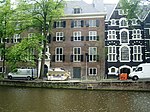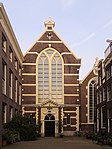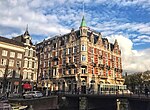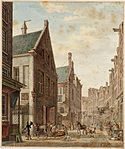Athenaeum Illustre of Amsterdam
17th century in AmsterdamRijksmonuments in AmsterdamSchools in AmsterdamUniversity of Amsterdam

Athenaeum Illustre, or Amsterdamse Atheneum, was a city-sponsored 'illustrous school' founded after the beeldenstorm in the old Agnieten chapel on the Oudezijds Voorburgwal 231 in Amsterdam, Netherlands. Famous scientists such as Caspar Barlaeus, Gerardus Vossius, and Petrus Camper taught here.
Excerpt from the Wikipedia article Athenaeum Illustre of Amsterdam (License: CC BY-SA 3.0, Authors, Images).Athenaeum Illustre of Amsterdam
Oudezijds Achterburgwal, Amsterdam Centrum
Geographical coordinates (GPS) Address Nearby Places Show on map
Geographical coordinates (GPS)
| Latitude | Longitude |
|---|---|
| N 52.369444444444 ° | E 4.8955555555556 ° |
Address
Oudemanhuispoort (UvA)
Oudezijds Achterburgwal
1012 DL Amsterdam, Centrum
North Holland, Netherlands
Open on Google Maps











